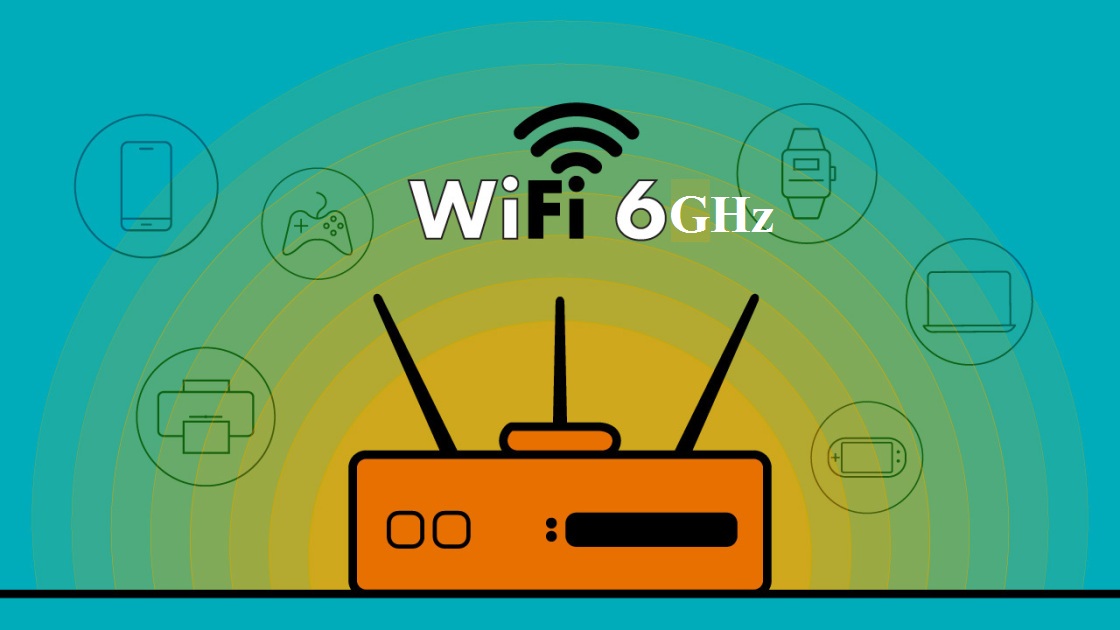
In a world that is becoming increasingly connected, the demand for faster and more reliable internet access has never been greater. As we rely on the internet for work, education, entertainment, and communication, technological giants like Meta (formerly known as Facebook) and Google are constantly pushing the boundaries of innovation to ensure that we stay connected at all times. The latest breakthrough in this quest is their successful acquisition of access to the 6GHz spectrum for Wi-Fi usage. This development promises to be a game-changer in the realm of connectivity, offering faster and more reliable internet access than ever before.
The 6GHz Spectrum: A New Frontier
Before delving into the implications of Meta and Google’s access to the 6GHz spectrum, it’s essential to understand what this spectrum entails and why it’s so crucial in the world of wireless communications. The radio frequency spectrum, which wireless communication technologies like Wi-Fi and cellular networks rely on, is a finite resource regulated by governments to avoid interference and chaos.
Historically, the 6GHz spectrum has been underutilized and has primarily been reserved for fixed and satellite communication services. This portion of the spectrum provides substantial bandwidth and the potential for high-speed data transmission. Its allocation for unlicensed use has been a significant development, creating the opportunity for technology companies to harness its capabilities and improve Wi-Fi services.
The Journey to Access
Meta and Google’s journey to secure access to the 6GHz spectrum has been marked by intense lobbying efforts and regulatory approvals. The Federal Communications Commission (FCC) in the United States played a crucial role in making this happen. In April 2020, the FCC voted unanimously to open up the 6GHz band for unlicensed use, recognizing the potential it held for Wi-Fi and other wireless technologies.
However, opening up the spectrum was only the first step. Companies seeking access had to demonstrate that their technology would not interfere with existing users of the spectrum, such as microwave and satellite communication services. After rigorous testing and evaluation, Meta and Google, among other technology giants, were granted access.
The Impact on Wi-Fi Connectivity
The implications of Meta and Google’s access to the 6GHz spectrum are nothing short of groundbreaking. This move promises to revolutionize Wi-Fi connectivity in several key ways:
- Higher Speeds: The 6GHz spectrum provides significantly more bandwidth than the traditional 2.4GHz and 5GHz bands used for Wi-Fi. With this additional spectrum, users can expect much higher data transfer speeds. Streaming 4K and even 8K video content, downloading large files, and engaging in bandwidth-intensive activities will become much smoother and faster.
- Less Interference: One of the challenges with the existing Wi-Fi spectrum is the interference from neighboring networks and various electronic devices. With the 6GHz spectrum, there will be less congestion, resulting in more reliable connections and reduced chances of network congestion or slowdowns.
- Lower Latency: The 6GHz spectrum allows for lower latency connections, which is crucial for real-time applications such as online gaming, video conferencing, and augmented or virtual reality experiences. Reduced latency ensures a more responsive and immersive user experience.
- Enhanced Capacity: With the additional bandwidth, Wi-Fi networks can accommodate more devices simultaneously. This is especially important in an era of increasing smart devices, the Internet of Things (IoT), and smart homes, where multiple devices require continuous connectivity.
- Improved Range: While 6GHz signals might not have the same penetration abilities as 2.4GHz, the availability of 6GHz Wi-Fi can provide a more consistent and faster connection over shorter distances, which can be advantageous in high-density environments.
- Enhanced Security: The new spectrum will also allow for improved security features. With less interference and more advanced technologies, Wi-Fi networks can implement stronger encryption and security protocols, making it more challenging for malicious actors to compromise data.
- Future-Proofing: As the demand for high-speed, low-latency connectivity continues to grow, access to the 6GHz spectrum ensures that Wi-Fi networks will remain relevant and capable of meeting the evolving needs of users for years to come.
The Competition and Collaborations
The race to harness the 6GHz spectrum for Wi-Fi is not limited to Meta and Google. Tech giants like Apple, Qualcomm, and Microsoft have also been actively working to access this spectrum. This competition fosters innovation and drives the development of cutting-edge Wi-Fi technologies, which ultimately benefits consumers.
Additionally, many technology companies are collaborating on this endeavor. Industry groups like the Wi-Fi Alliance are actively working to establish standards and ensure interoperability between different manufacturers’ devices. This collaborative approach ensures that Wi-Fi users can enjoy seamless connectivity regardless of the devices they use.
Challenges and Regulatory Concerns
While the prospects of super-fast 6GHz Wi-Fi are exciting, there are some challenges and regulatory concerns to consider. These include:
- Ensuring Compatibility: As the 6GHz spectrum is opened up for unlicensed use, ensuring compatibility with existing devices and networks is crucial. The transition should be seamless and not disrupt current Wi-Fi operations.
- Avoiding Interference: Preventing interference with existing users of the 6GHz spectrum, such as microwave and satellite services, is vital. Robust testing and regulatory oversight are necessary to address these concerns.
- Global Adoption: Wi-Fi standards and spectrum allocation can vary from one country to another. Achieving global harmonization in the use of the 6GHz spectrum is essential for consistent, high-quality connectivity worldwide.
- Security Challenges: With the expansion of Wi-Fi capabilities, there are increased concerns about cybersecurity. Protecting against potential vulnerabilities and cyberattacks is a paramount concern.
- Environmental Impact: The widespread deployment of new wireless technologies can have environmental consequences, particularly concerning energy consumption and electronic waste. It’s essential to address these concerns responsibly.
Final Thoughts
Meta and Google’s access to the 6GHz spectrum for Wi-Fi is a milestone in the ongoing quest for faster, more reliable connectivity. The implications are far-reaching, offering higher speeds, reduced latency, enhanced capacity, and improved security. This development has the potential to transform how we connect, work, and play in a world that is increasingly reliant on digital communication.
However, it’s crucial to navigate the challenges and regulatory concerns associated with this transition carefully. Ensuring compatibility, preventing interference, achieving global adoption, addressing security challenges, and considering the environmental impact are all essential factors in the successful deployment of 6GHz Wi-Fi.
As technology companies continue to compete and collaborate in this space, consumers can look forward to an exciting future of connectivity that will shape the way we live and work for years to come. The era of super-fast 6GHz Wi-Fi is upon us, and it promises to be a game-changer in the world of connectivity.



